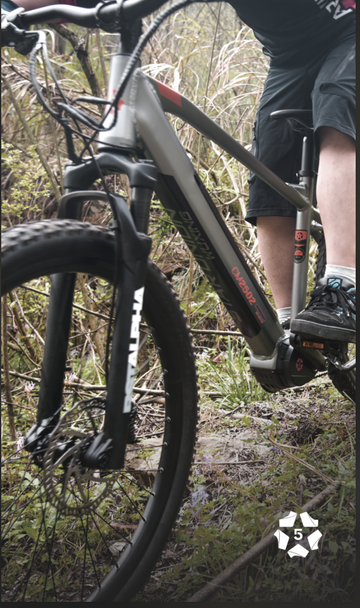Hydraulic Disc Brakes Performance and Analysis in Extreme Environments
by YunaLi on Feb 27, 2025

Hydraulic disc brakes have become the standard in modern bicycles, motorcycles, and other high-performance vehicles due to their exceptional braking power and precise control. However, when these braking systems are exposed to extreme environments, their performance and durability are often put to the test. From the coldest Arctic conditions to the scorching desert heat, the performance of hydraulic disc brakes in harsh environments is a key concern for riders and drivers. This article will analyze the performance, challenges, and considerations when choosing a hydraulic brake system for extreme conditions.
1. Overview of Hydraulic Disc Brakes
A hydraulic disc brake system consists of brake fluid, calipers, and a brake rotor. Unlike traditional mechanical disc brakes, hydraulic systems use fluid to transmit force, resulting in smoother and more efficient braking. The main advantages of hydraulic disc brakes include reduced maintenance needs and superior braking power, especially at high speeds or in complex terrains, offering better heat dissipation and more precise control.
2. Performance of Hydraulic Disc Brakes in Cold Environments
In extremely cold conditions, hydraulic disc brakes face several challenges:
1.Viscosity Changes of Brake Fluid: At low temperatures, brake fluid becomes more viscous, which can slow down the brake response time. In extreme cold, hydraulic fluid may become too thick, leading to slower braking or even system failure.
2.Freezing Phenomenon: Moisture in the brake system can freeze at low temperatures, blocking the brake lines or interfering with the operation of the brake pump, which can significantly degrade braking performance.
3.Brittleness of Metal Components: Cold temperatures can cause metal parts (such as the brake rotors and pistons) to become brittle, increasing wear and reducing the system's durability.
Solution: Choose brake fluid designed for low temperatures and regularly inspect the brake system for seal integrity and lubrication. Additionally, it’s advisable to use anti-freeze fluids and hydraulic brake systems specifically designed for cold environments.

3. Performance of Hydraulic Disc Brakes in Hot Environments
In hot environments, hydraulic disc brakes also face a range of challenges:
1.Overheating Issues: High temperatures can lead to overheating of the brake system, especially during prolonged braking. Overheating can cause brake fluid degradation, resulting in reduced braking efficiency and, in some cases, brake failure.
2.Evaporation of Brake Fluid: Extended exposure to high temperatures may cause brake fluid to evaporate, introducing air into the hydraulic system, which compromises brake stability and performance.
3.Warping of Brake Discs and Pads: High heat can cause brake rotors and pads to warp or develop cracks, which affects braking performance and rider safety.
Solution: Use brake fluids that are designed to withstand high temperatures, and regularly check the brake system and replace fluid when necessary. To prevent overheating, use rotors with efficient heat dissipation and ensure the brake system has proper ventilation.
4. How to Choose a Hydraulic Disc Brake System for Extreme Environments
1.Choose the Right Brake Fluid: Brake fluids have varying temperature ranges, so it’s important to select one that is compatible with the extreme temperatures you may encounter, whether cold or hot.
2.Brake Rotor Material: High-performance carbon fiber or ceramic rotors tend to perform better in extreme conditions, offering greater stability and resistance to temperature-induced warping.
3.Regular Maintenance and Inspections: In extreme environments, it’s crucial to inspect the brake system more frequently, including checking fluid levels, inspecting brake pads and rotors, and ensuring all seals are intact.

5. Conclusion
Hydraulic disc brakes are a critical component for modern bicycles and motorcycles, offering superior braking power and precision. However, the extreme environments of the polar cold or desert heat can challenge these systems. Understanding how hydraulic disc brakes perform under different conditions and taking proactive steps to address these challenges is key. By choosing the right brake fluid, brake rotors, and maintaining the system regularly, you can ensure that your hydraulic disc brakes deliver optimal performance and safety in any environment.
If you ride or drive in extreme conditions, choosing a hydraulic disc brake system that has been tested and optimized for these environments will help you maintain stable and reliable braking performance under any conditions.




